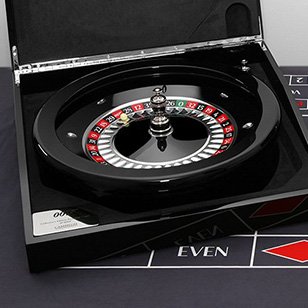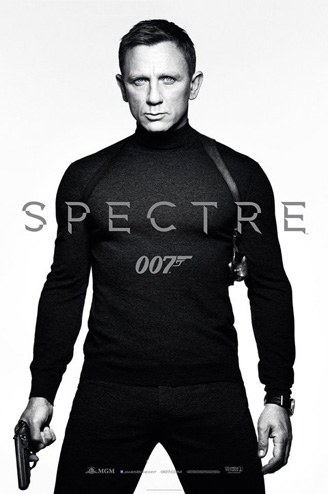Baccarat Chemin de Fer
What is Bond's favorite Casino game? It might be Baccarat. 007 plays Baccarat Chemin de Fer in the movies Dr. No, Thunderball, On Her Majesty's Secret Service, For Your Eyes Only and GoldenEye.
And since the game of Baccarat is of major importance in the first James Bond novel Casino Royale, it is at least one of the most classic Bond casino games.
In the 21st James Bond film Casino Royale (2006) the game of Baccarat is replaced by no-limit Texas Hold'em poker.
In the movie Dr. No, Bond mentions the name of "Chemin De Fer" when he and Sylvia Trench walk to the cashier in Le Cercle casino.
James Bond plays chemin de fer at the Estoril Casino in Portugal in the 1969 movie On Her Majesty's Secret Service. He is accompanied by Tracy di Vicenzo (Diana Rigg), the woman he eventually marries. Bond wins the game and wins a large sum of money.
James Bond plays Baccarat in the 1981 movie For Your Eyes Only. He is seen playing the game at the Achilleion Palace in Corfu, Greece. He is accompanied by Countess Lisl von Schlaf, a wealthy Austrian woman who is also a skilled gambler. Bond wins the game and wins a large sum of money.
In the movie GoldenEye, Bodn plays baccarat in the Casino de Monte Carlo. Xenia Onatopp (Famke Janssen) refers to Baccarat as one of their shared passions.
The rules of Baccarat
Chemin de fer was the original version of baccarat when it was introduced to France and is still the version that is popular there. The name "Chemin de Fer" (iron road) came about because the cards were placed in an iron box and predates its modern French meaning of "railway." In 1960 Lord Lucan won £26,000 over two nights playing 'Chemmy' at a high-end gambling party run by John Aspinall. However, Lucan would eventually accrue significant debts.
Six decks of cards are used, shuffled together. Players are seated in random order, typically around an oval table; discarded cards go to the center. Play begins to the right of the croupier and continues counterclockwise. At the start of the game, the croupier and then all players shuffle the cards in play order. The croupier shuffles a final time and the player to his left cuts the deck.
Once play begins, one player is designated as the "banker." This player also deals. The other players are "punters." The position of banker passes counterclockwise in the course of the game. In each round, the banker wagers the amount he wants to risk. The other players, in order, then declare whether they will "go bank," playing against the entire current bank with a matching wager. Only one player may "go bank." If no one "goes bank," players make their wagers in order. If the total wagers from the players are less than the bank, observing bystanders may also wager up to the amount of the bank. If the total wagers from the players are greater than the bank, the banker may choose to increase the bank to match; if he does not, the excess wagers are removed in reverse play order. The banker deals four cards face down: two to himself and two held in common by the remaining players. The player with the highest individual wager (or first in play order if tied for highest wager) is selected to represent the group of non-banker players.
The banker and player both look at their cards; if either has an eight or a nine, this is immediately announced and the hands are turned face-up and compared. If neither hand is an eight or nine, the player has a choice to accept or refuse a third card; if accepted, it is dealt face-up. Traditional practice (grounded in mathematics, similarly to basic strategy in blackjack, but further enforced via social sanctions by the other individuals whose money is at stake) dictates that one always accept a card if one's hand totals between 0 and 4 (inclusive) and always refuse a card if one's hand totals 6 or 7. After the player makes his decision, the banker in turn decides either to accept or to refuse another card. Once both the banker and the representative player have made their decision, the hands are turned face-up and compared.
If the player's hand exceeds the banker's hand when they are compared, each wagering player receives back their wager and a matching amount from the bank, and the position of banker passes to the next player in order. If the banker's hand exceeds the player's hand, all wagers are forfeit and placed into the bank, and the banker position does not change. If there is a tie, wagers remain as they are for the next hand.
If the banker wishes to withdraw, the new banker is first player in order willing to stake an amount equal to the current bank total. If no one is willing to stake this amount, the new banker is instead the next player in order, and the bank resets to whatever that player wishes to stake. Many games have a set minimum bank or wager amount. (source: Wikipedia)
Comments
There is no mention of backgammon. This game was also played (with loaded dice) in a Bond film.















